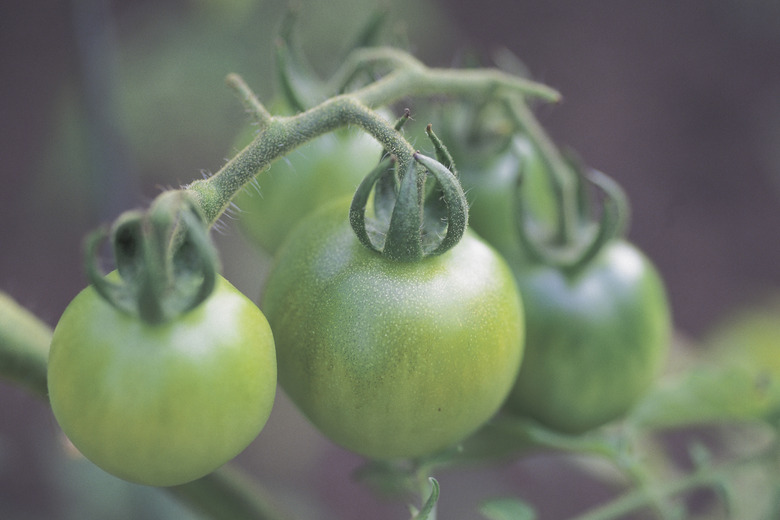The Best Fungicide For Tomatoes
We may receive a commission on purchases made from links.
The best way to combat fungal infections on tomatoes, or any other kind of plant, is prevention. Fungicides can protect a plant if they are used before any kind of fungal infection begins. But after a fungus attacks a plant, eliminating it isn't easy. You can control its spread by continuing to spray uninfected parts of the plant, but there is little chance of stopping a fungus once it starts. Proper tomato planting and care practices are your best weapons against tomato fungus.
Best Fungicide for Tomatoes: Prevention
Best Fungicide for Tomatoes: Prevention
Plant tomatoes (Solanum lycopersicum, USDA zones 10-11) when the soil in spring has warmed to 55 degrees Fahrenheit and the night air temperatures are in the 50s. Give the plants plenty of air circulation for when they reach their mature size; don't crowd them. Plant them in full sun on rich soil, and water only at the base of the plants, not from above with a hose or sprinkler. Wet foliage encourages fungal disease.
Don't overfertilize tomatoes. Apply tomato fertilizer according to the recommendation of a soil test without randomly broadcasting what "looks right." Plant tomatoes in a different spot every three years to prevent diseases from building up in the soil.
Treating Septoria Blight
Treating Septoria Blight
After the first fruits set on the plant, the lower leaves of the plant can become infected with white or gray spots with a black or brown margin. Pick off infected leaves, and discard them in the garbage. Spray the plant with a copper fungicide or a synthetic fungicide labeled for use on vegetables or one containing chlorothalonil. Septoria spreads quickly in wet weather, so be sure the plants are well spaced, and avoid working among them when they're wet. Clean up all refuse in the fall, so the fungus doesn't overwinter in the debris.
Treating Early Blight
Treating Early Blight
Dark brown or black spots can appear on the lower leaves of the plant after the plant has set plenty of fruit. Rings appear inside the spot, making it resemble a bull's eye. The fungus attacks the stems and fruit, too, producing black, sunken spots. Leaves yellow and drop off.
Pick off infected leaves and fruit, and cut off affected stems, dipping your pruners in isopropyl alcohol before making each cut. At the first sign of trouble, begin spraying the plants with an organic fungicide containing copper or a synthetic fungicide containing clorothalonil or mancozeb.
Treating Late Blight
Treating Late Blight
Late blight appears toward the end of the growing season when night temperatures begin to cool. Black, wet-looking spots start at the leaf edge and spread inward. Wet weather aids the spread of the fungus, and it affects the fruit, as well, with rough, dark brown patches. Remove infected plant parts, and spray with an organic fungicide containing copper or a synthetic fungicide containing chlorothalonil or mancozeb.
